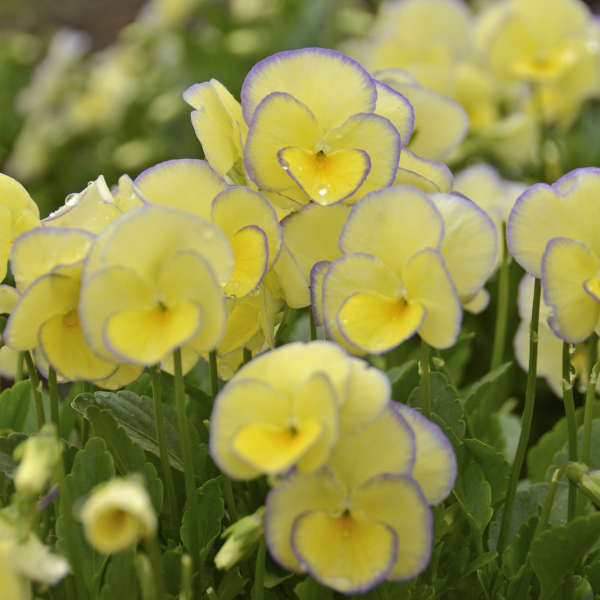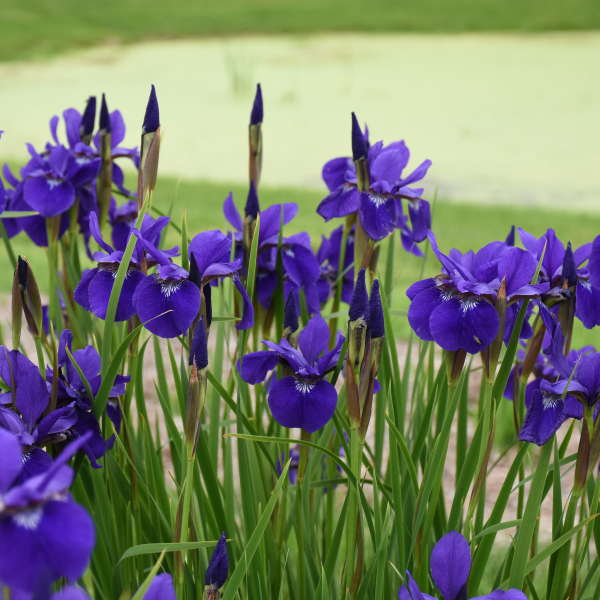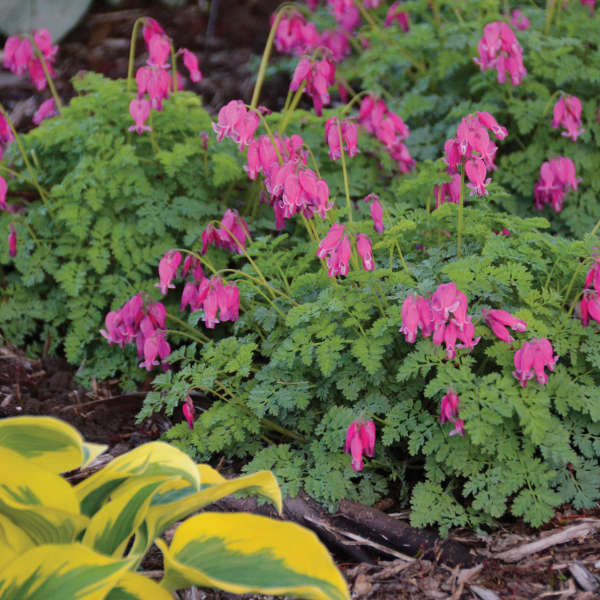How to Grow Viola Etain
How to grow Viola Etain for beautiful garden color from Spring until early Fall. Viola is a sentimental favorite that many remember from their grandmother’s garden. A low growing perennial, commonly seen in early Spring and into the Fall season.

Characteristics of Viola Etain
Viola is also commonly known as Violet or Pansy. The Viola Etain has pale lemon yellow blossoms with lavender margins and a light fragrance. A cheerful color for Spring, Summer, and even Fall gardens.
How to Grow Viola – About the Viola

First, the Viola Etain plant features and growing conditions:
- Grows in zones 5 to 8
- Mostly Sunny to full shade
- Reaches 6 to 8 inches tall with a spread of 6 to 8 inches
- Fragrant flowers are large pale lemon Yellow with lavender edged petals and foliage are shades of green
- Blooms begin in late Spring continue through Summer and into early Fall
- Tolerant of normal, sandy, and acidic soil conditions
- Attracts butterflies
- Use in a cut floral arrangement
- Tolerant of shade
- Viola garden styles include patio container, cottage, rock garden, or woodland shade
Garden Site Selection
Viola Etain can be grown in many areas of the garden. It can take almost full Sun as well as full shade such as in a woodland setting. This viola can also be planted in containers.
Soil Preparation
- Prepare the garden soil in a bed or container. Take a trowel and break then loosen the soil.
- Etain can be grown in sandy, acidic, or normal soil conditions. We usually add sphagnum peat moss to the soil. Sphagnum peat moss is not only acidic but it provides good drainage.
- Work the sphagnum peat moss and compost if you use it, into the soil.
- If you have a problem with grubs, sprinkle some Milky Spore powder into the soil. Grubs eat the roots of grass and other plants. They eventually emerge from the ground as Japanese Beetles. As grubs come across the Milky Spore in the soil, they consume it. Milky Spore is toxic to grubs.
How to Grow Viola Etain

After you’ve selected a garden location for the Viola Etain and the soil is prepared, you can plant the Viola.
- Dig a hole the depth of the plastic container where the Viola came in. the hole should also be twice the width of the root ball or container.
- Place the Viola into the hole. The plant crown is at the soil level then using the surrounding soil to cover the root ball. Pack the soil around the plant roots to eliminate any air pockets.
- Water the Viola thoroughly so that the water travels down to the roots. Continue watering daily for the next few weeks until the plant settles into the garden or container.
- Over the hotter season, water regularly. Water more frequent during periods of drought or excessive heat temperatures.
When to Plant Viola Etain
Plant Viola during the Spring or in early Fall. Avoid planting over the Summer when temperatures can soar to 90 degrees or more. Milder temperatures allow plants to settle in before being subjected to extreme temperatures.
Tips for How to Grow Viola Etain
- Violas prefer cool, moist, shady garden areas
- In Northern climates, Violas tolerate full Sun but prefer partial to full shade
- Shade below deciduous trees are great for Violas because they receive full Sun in the early Spring. And provides cover from the harsh Summer Sun from the leaved trees
- In Southern climates, grow Violas in partial to full shade garden areas. Keep soil mulch to retain moisture and soil cool
- Periodically shear back Violas to stimulate additional flower production when flower blooming begins to decline
- Shear Violas back again in early Spring to remove any Winter damaged foliage
Companion Plants for Viola Etain
-
Hosta ‘Designer Genes’

Designer Genes Hosta is one of the best yellow hosta with red petioles. Brilliant yellow leaves with contrasting deep wine red shoots appear in the Spring. The Designer Genes foliage softens to a chartreuse green later in the season. In the late Summer, purple flowers emerge on the stocks.
- Grows in zones 3 to 9
- Full shade to part Sun and part shade
- Tops out at 18 inches with a spread of 12 inches
- Blooms are purple shades with yellow foliage
- Late Summer blooms
- Attracts Hummingbirds
2. Iris sibirica ‘Caesar’s Brother’

The Caesar’s Brother Iris is also commonly known as Siberian Iris. Elegant and delicate flowers that are disease resistant. Early Summer blooming Iris.
- Grows in zones 3 to 9
- Part Sun and part shade to full Sun
- Reaches 36 to 42 inches high with a spread of 18 to 24 inches wide
- Flowers are deep purple shades and yellow white blaze with black veining, foliage is green shades
- Blooms in the early Summer
- Bee friendly and attracts hummingbirds
- Resistant to both deer and rabbits
- Requires regular watering throughout the season
- Grow along water features
- Tolerant of juglone soil conditions that Black Walnut trees release
3. Dicentra ‘King of Hearts’

King of Hearts Dicentra is also commonly known as a Fern-leafed Bleeding Heart and Western Bleeding Heart. Long blooming perennial that pollinators love!
- Grows in zones 3 to 9
- Full shade to part shade and part Sun to full Sun
- Reaches 8 to 10 inches tall with a spread of 12 inches wide
- Blooms are bright rose heart-shaped flowers with lacy, soft blue green foliage
- Blooms from late Spring through Summer and into early Fall
- Bee friendly and attracts Hummingbirds
- Resistant to deer
- Prefers moist soil conditions
- Tolerant of Sun and heat conditions
4. Ajuga reptans ‘Burgundy Glow’

Burgundy Glow Ajuga is also commonly known as Bugleweed and Carpet Bugleweed.
- Grows in zones 3 to 10
- Full shade to part Sun and part shade to full Sun
- Reaches 6 inches tall with a spread of 8 to 10 inches wide
- Blooms are short spikes of blue upright flowers with tri colored foliage
- Low spreading foliage are shades of creamy white, rose burgundy, and dark green
- However, fall foliage leaves turn deep bronze with a rose tone
- An evergreen ground cover
- Blooms from mid to late Spring
- Bee friendly and attracts butterflies and Hummingbirds
- Resistant to deer
- Grow in containers and rock gardens
This ends our post on how to grow Viola Etain plants. Tell us what you think about this Viola plant. Do you have a favorite Viola plant that you enjoy growing?
If you enjoyed this post . . . .
You Will Enjoy Our Other Gardening related posts.
52 Types of Pumpkins to Eat, Decorate, and Display
8 Fantastic Annuals to Plant this Fall
23 Fall Blooming Plants for Pollinators
How to Keep Deer Out of Your Garden During the Winter
And if you have any questions, feel free to reach out to us. We always are ready to help you out. Thank you for dropping by.
Mary











